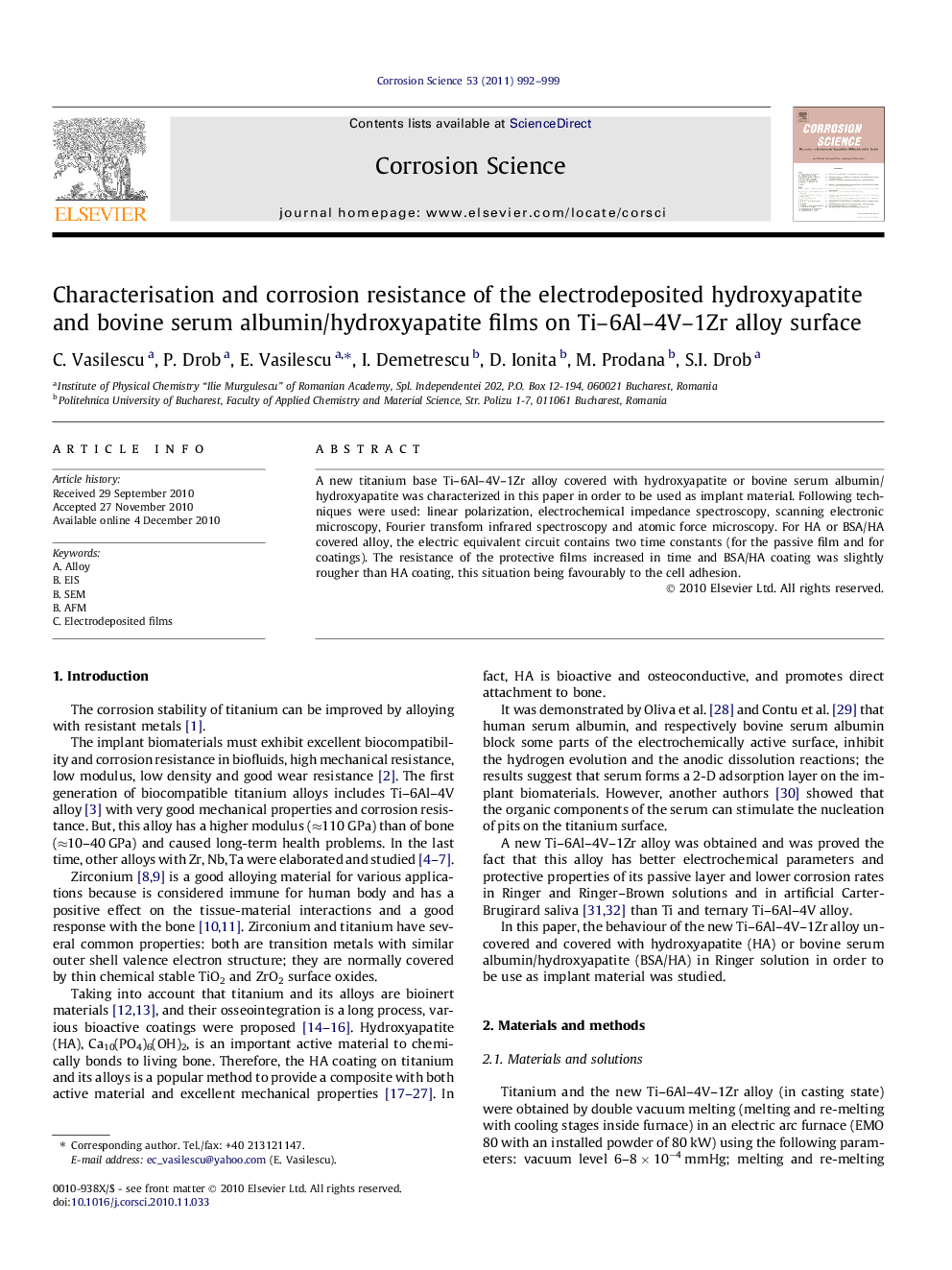| Article ID | Journal | Published Year | Pages | File Type |
|---|---|---|---|---|
| 1470683 | Corrosion Science | 2011 | 8 Pages |
A new titanium base Ti–6Al–4V–1Zr alloy covered with hydroxyapatite or bovine serum albumin/hydroxyapatite was characterized in this paper in order to be used as implant material. Following techniques were used: linear polarization, electrochemical impedance spectroscopy, scanning electronic microscopy, Fourier transform infrared spectroscopy and atomic force microscopy. For HA or BSA/HA covered alloy, the electric equivalent circuit contains two time constants (for the passive film and for coatings). The resistance of the protective films increased in time and BSA/HA coating was slightly rougher than HA coating, this situation being favourably to the cell adhesion.
Graphical abstractFigure optionsDownload full-size imageDownload as PowerPoint slideResearch highlights► EIS spectra for Ti6Al4V1Zr alloy were fitted with one time constant electric equivalent circuit. ► For covered alloy the equivalent circuit contains two time constants. ► Resistances of films increased in time revealing the improvement of the alloy protection capacity. ► Surface roughness significantly increased by apatite formation, being favourably to cell adhesion.
